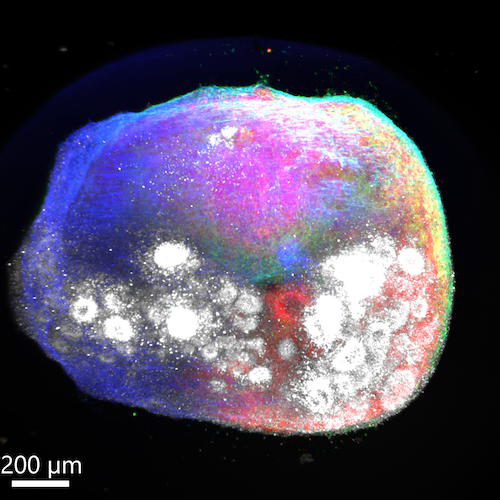Biography
Dr Kathryn Bowles' primary interest is in understanding the genetic and mechanistic biology underlying tauopathy. She completed her PhD at Cardiff University in Prof Lesley Jones' lab, before moving to the Icahn School of Medicine at Mount Sinai in New York, where she joined Prof Alison Goate's lab as a postdoctoral fellow. She then joined the University of Edinburgh UK DRI to start her own lab in 2022, where her work is supported by the BrightFocus Foundation and the Rainwater Charitable Foundation. Dr Bowles' lab integrates functional genomics, biochemistry and iPSC organoid models to investigate the regulation of MAPT expression, function and splicing, and how these processes contribute to Alzheimer's disease, frontotemporal dementia, Parkinson's disease and other tauopathies.
Bowles Lab
Explore the work of the Bowles Lab, focused on deciphering what happens within our cells when there is a mutation in the tau gene.

